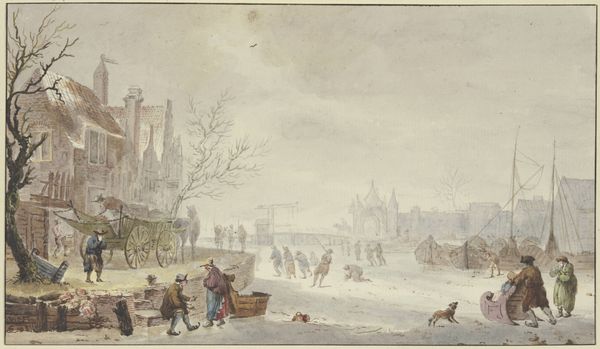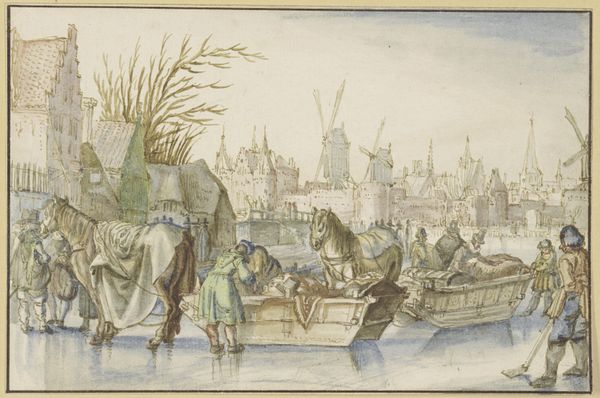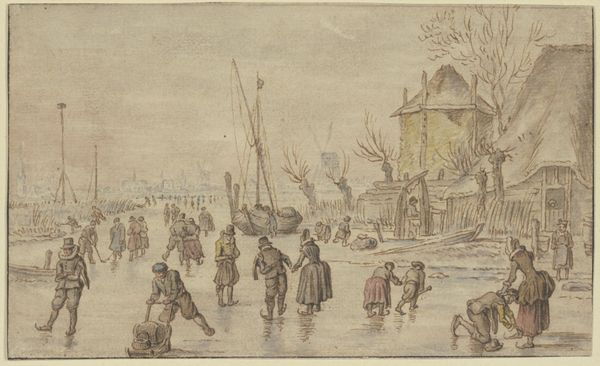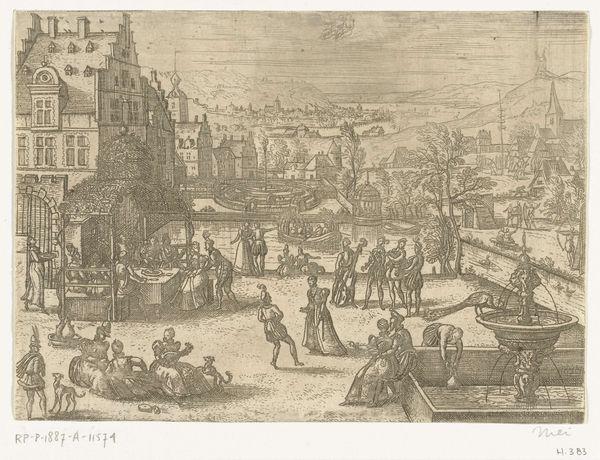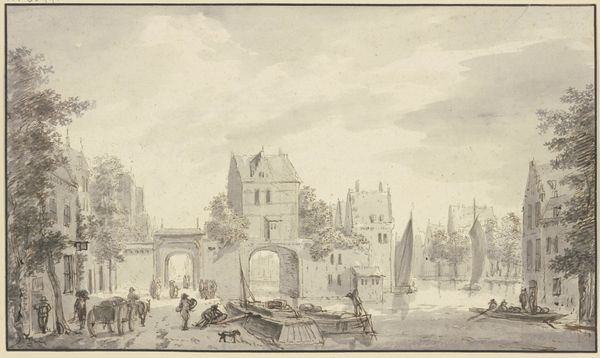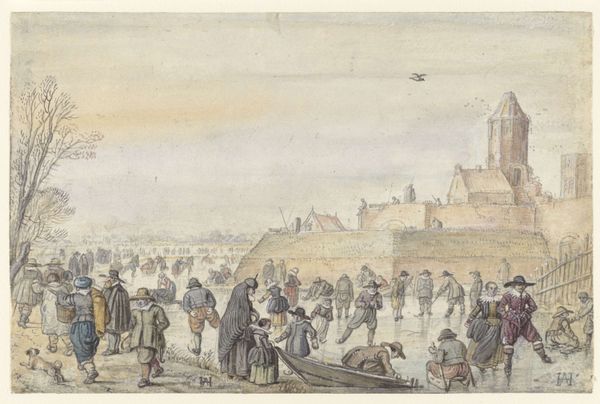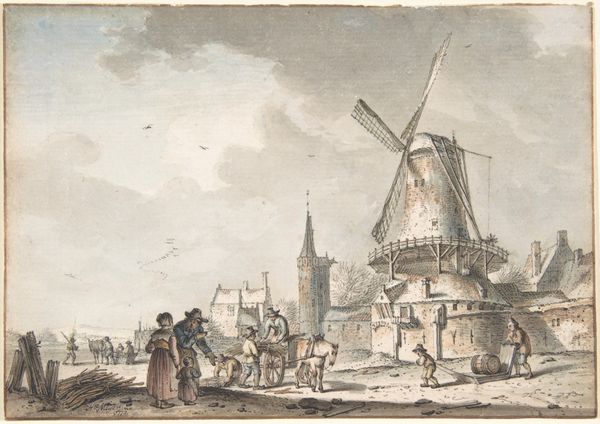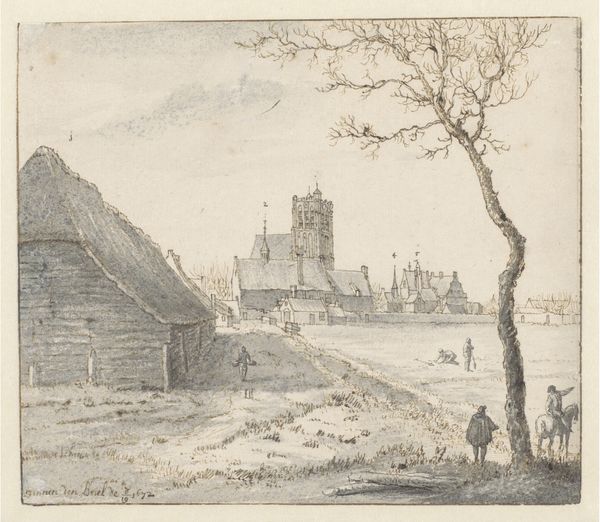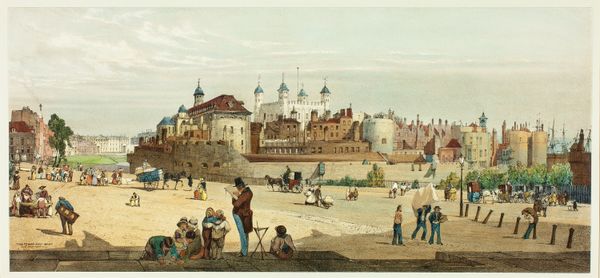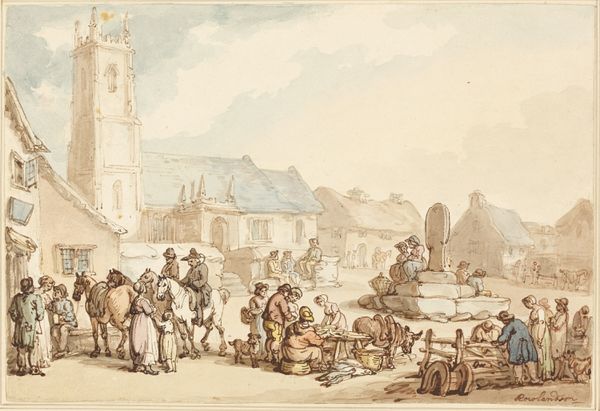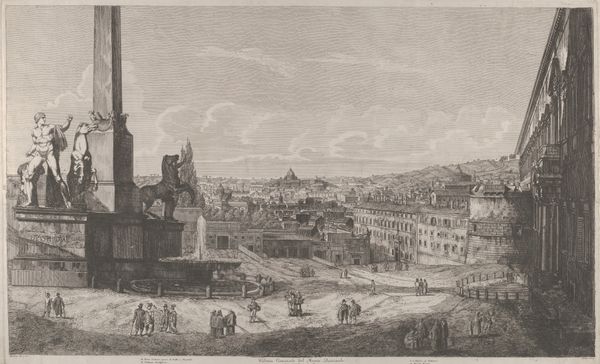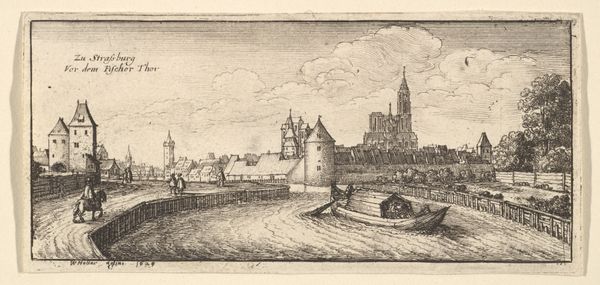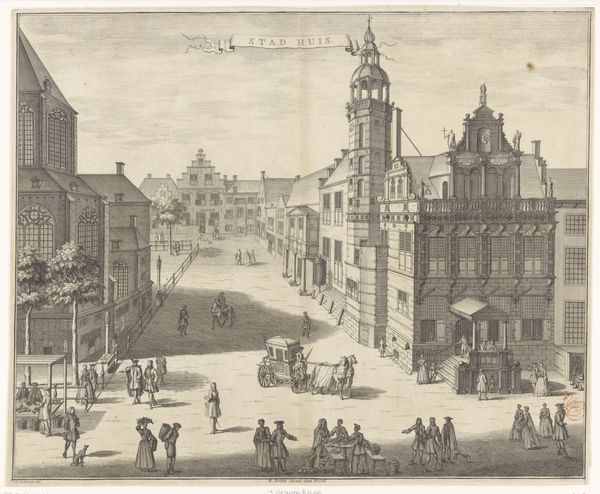
painting, watercolor
#
dutch-golden-age
#
painting
#
landscape
#
figuration
#
watercolor
#
cityscape
#
genre-painting
Dimensions: height 236 mm, width 313 mm
Copyright: Rijks Museum: Open Domain
Curator: Here we have Karel Slabbaert’s “Galgewater in Leiden met ijsvermaak,” a watercolor cityscape offering a vibrant snapshot of 17th-century Dutch life. Editor: It feels… frigid. And strangely detached. The color palette is muted, almost washed out, reflecting the harsh winter. It also gives it a fragile feel. Curator: Slabbaert, active during the Dutch Golden Age, situates us within the context of a burgeoning republic, fueled by trade and Calvinist values, which celebrated the quotidian moments of its citizenry. Consider the term ‘vermaak’ in the title, that refers to leisure in a social context, a freedom enabled by the wealth generated by the VOC. Editor: Right, it’s not just people enjoying the ice; it's about the means to enjoy the ice. The depiction of laborers pushing sleds brimming with goods and people seems less like playful enjoyment and more about utilitarian purposes within specific social roles. Curator: Precisely, the scene can be seen as an insight into societal power dynamics and hierarchies of the era. Those enjoying leisure in comfort versus those for whom ice is merely a surface for the labor of moving things. It invites a discussion on class, leisure, and the realities of life in 17th-century Leiden. Editor: Looking closer at the figures, their clothing, the visible efforts and physicality, makes you really appreciate the materiality involved in daily life back then. I’m curious about the production of watercolor itself at that time - where were the pigments sourced, who prepared the materials, what kind of paper was commonly used? Those factors, too, influence our interpretation. Curator: Absolutely, a crucial insight. If we view those decisions alongside Slabbaert's place in the Guild of Saint Luke, and within the broader artistic market, then this ‘snapshot’ speaks more deeply about the political and cultural systems shaping its creation and dissemination. It transcends being merely picturesque. Editor: Yes, stepping away, considering the resources, labor, and conditions involved – it grounds the beauty within a social fabric, making you see the work, and that era, in a more tangible way. Curator: For me, it shows the everyday made strange by history, offering critical points to reconsider our connection with the past. Editor: Indeed, and it emphasizes the value we place on art to connect, on a material level, to our understanding of different cultures.
Comments
No comments
Be the first to comment and join the conversation on the ultimate creative platform.
